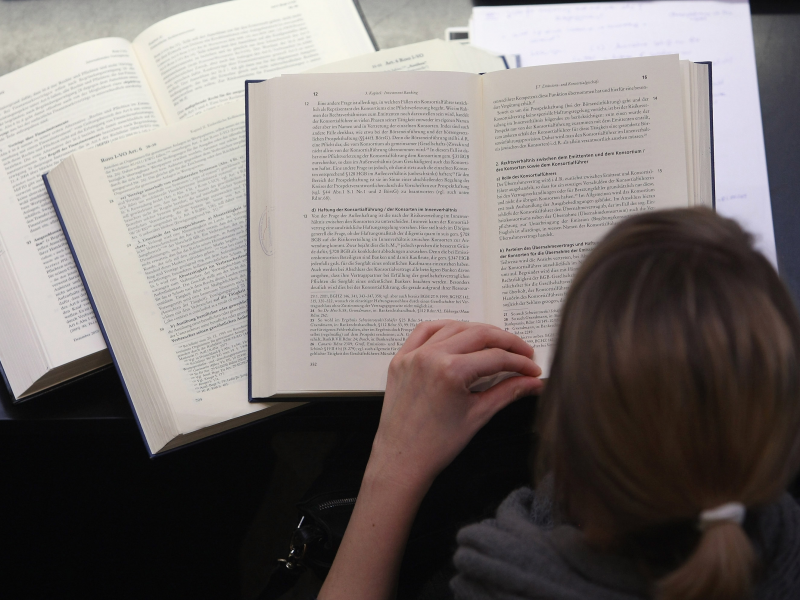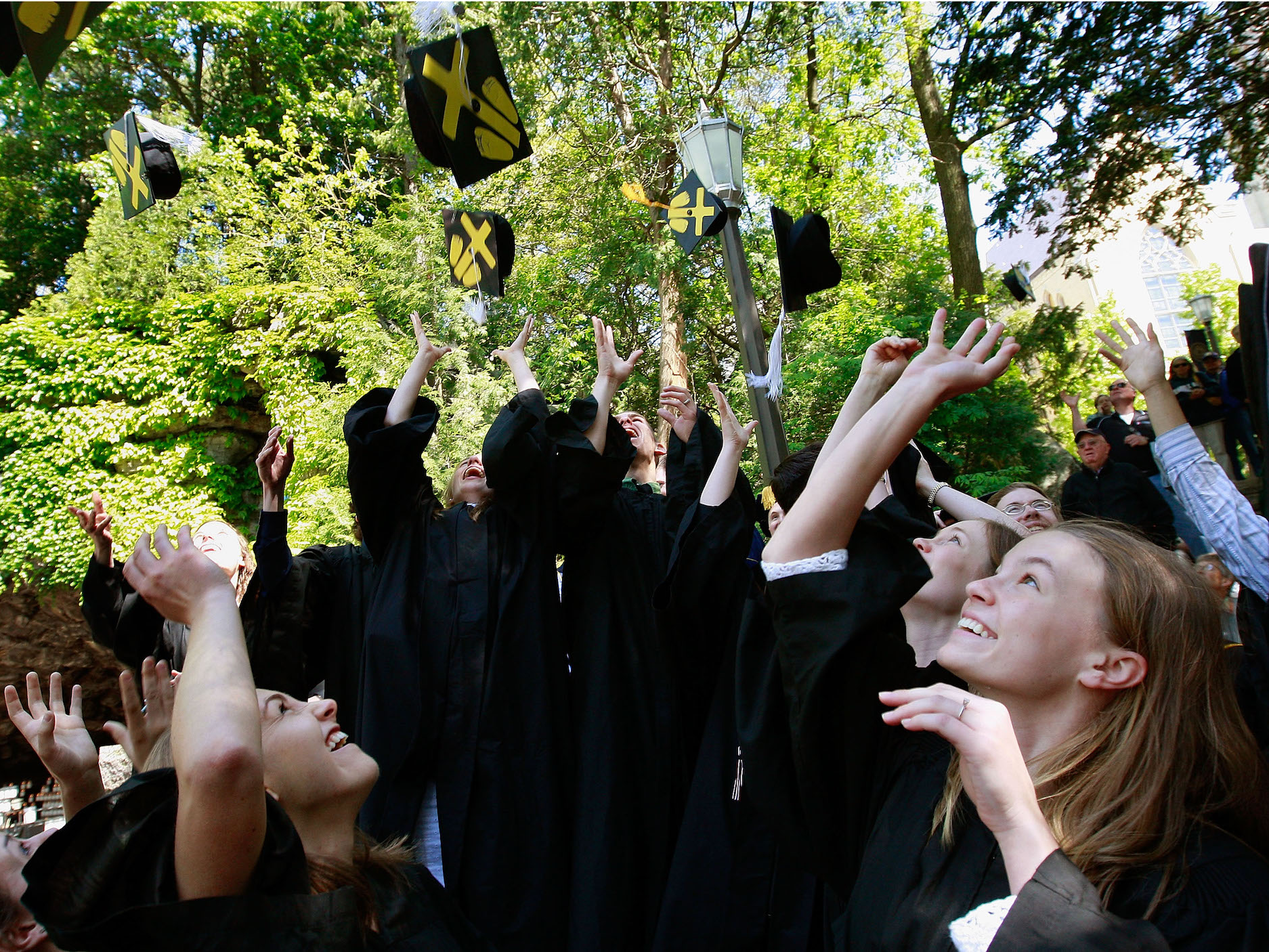- Millennials’ lives are a lot different than their parents’ lives were at the same age.
- Exhibit A: College – higher education has evolved over time, creating a different environment for millennials compared to previous generations.
- Most significantly, college today is more expensive for millennials – but it has also experienced an increase in technological advancements and opportunities, diversity, and stress and competition.
Millennials face a lot of differences compared to their parents – they carry bigger financial burdens; deal with a different dating pool; always have to be “on” at work, but have more flexible working options; and have access to social media.
They also have a different college experience than baby boomers and Gen X did. Most notoriously so, the cost of college tuition has significantly increased since the 1980s, but there are a few other contrasts as well, both good and bad – think technological advancements, increased diversity, and more stress and competition.
In fact, more millennials are attending college than any previous generation. According to the Pew Research Center, the number of college-educated young adults with a bachelor’s degree is at its highest point yet – 40% of millennial workers aged 25 to 29 had a bachelor’s degree in 2016, compared to 32% of Gen Xers in 2000 and 26% of baby boomers in 1985.
But they’re attending college in a different environment. From the price of college textbooks to online learning opportunities, here’s how college differs for millennials.
More students are going to college.

"The demand for higher education has risen dramatically since 1985," Richard Vedder, author and distinguished professor of economics emeritus at Ohio University, previously told Business Insider.
NBC News previously reported that undergraduate enrollment in the US had duplicated from 1970 to 2009. And, according to the Department of Education, US colleges expected a total of 20.4 million students in fall 2017, about 5.1 million more than in fall 2000.
"The rewards for college have expanded and grown from 1985 to a little after 2000 and sort of leveled off in the past decade," Vedder said.
College is more competitive.

With more students applying to colleges, it's harder to get in. In 1988, the acceptance rate for Columbia University was 65%; as of 2014, it's 7%, according to US News & World Report. Likewise, the University of Michigan's acceptance rate dropped from 52% to 33% in the same time period.
But Jacoba Urist of The Atlantic says that there is truth and untruth to the myth of college admissions getting harder each year. "As it turns out, getting into college actually isn't any harder than it was a decade ago," she wrote. "It's just that the odds of admission to your particular college may have decreased."
Whatever the case, the facts show that acceptance rates are on the decline.
College is more expensive.

College tuition has more than doubled since the 1980s. From the late 1980s to the 2017-18 school year, the cost of an undergraduate degree rose by 213% at public schools, adjusting for inflation.
Back then, the average annual tuition for public college was just $1,490, or $3,190 in today's dollars, compared with today's price tag of $9,970, according to Student Loan Hero.
Private college tuitions witnessed a cost increase in the period of 129% when adjusted for inflation. In the late 1980s, it cost $7,050, or $15,160 in today's dollars, for a private undergraduate degree. Today, the average cost is $34,740.
College textbooks are also pricier.

Along with tuition, the price of college textbooks has increased, reports The Huffington Post, citing the Government Accountability Office. Compared to 30 years ago, they're 812% costlier. A single textbook can cost up to $300, and the average college student is expected to spend more than $1,200 on textbooks annually.
As a result, electronic textbooks are on the rise - and they could save students as much as $1.42 billion collectively a year, according to Huffington Post. That's not an option parents had back in the day.
College today is more technologically advanced.

College millennials have greater technology benefits than their parents did before the advent of the Internet. Mobile devices and laptops dominate classrooms, but they can also distract students from lessons.
Students can now receive lectures via PowerPoint if they miss a class, and many universities offer access to recorded faculty lectures, according to NBC News.
Instead of typewriters or desktops, students now have laptops - which they can bring to class to take notes instead of handwriting lectures. They can also rate their professors online and use social media to stay in touch with classmates.
More students are learning online.

With such technological advancements, more and more students are enrolling in online courses - options that weren't quite available for their parents.
Online course enrollment increased between the fall 2015 and 2016 school years more than it had in the past three years, reported US News & World Report, citing the Babson Survey Research Group. Public colleges and universities, specifically, saw a 7% increase in growth.
Business Insider previously reported on a survey that revealed 69% of millennials thought they learned better from technology than from people - only 50% of respondents older than 45 felt the same.
The student population is more diverse.

Student populations at colleges has evolved demographically since 1970. According to the 2018 State of the Student research project conducted by education technology company Chegg, which sampled more than 1,000 college students in the US, current minority enrollment is 42% - a sharp contrast from 15% in 1970.
Currently, females make up more than half of the student population; in 1970, they made up less than half. Students are also older - 40% of college students are older than 25 years old, compared to 28% in years prior.
College students aren't as religious as they used to be.

The number of freshmen who don't identify with a religion increased from around 16% to 25% from 2005 to 2014, according to The Huffington Post, citing UCLA's Cooperative Institutional Research program, which surveyed more than 150,000 full-time freshmen students across more than 200 colleges and universities.
Students at Catholic colleges who don't identify with a religion increased by more than 4% in the same time span. The percentage of students not identifying with a religion at other religious colleges also increased.
College students are more stressed today.

From 2005 to 2015, the proportion of freshmen saying they "occasionally or frequently feel overwhelmed" increased by 10%, according to the Huffington Post. Denise Hayes, president of the Association for University and College Counseling Center Directors in 2011, told the publication that this could be linked to financial pressures and stress to succeed.
Perhaps this is because millennials are balancing more in addition to their school work. According to a study by the Center for Education and the Workforce at Georgetown University, 70% to 80% of students have a job while attending school - 40% of them work more than 30 hours a week, exceeding the 15 hours a week cap they should maintain without hurting their academics.

